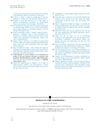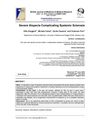
Search
for
Sort by
Research
300-330 / 396 results

research Disorders of the Scalp and Hair
Different scalp and hair disorders are more common in certain ethnic groups, with the most common being androgenetic alopecia, which is treated with medications like minoxidil and finasteride.

research Androgenetic Alopecia in Women
Female hair loss is often hereditary and can be treated with medication, hair transplants, and lasers.

research Severe Alopecia Complicating Systemic Sclerosis
A woman with severe hair loss due to systemic sclerosis regrew her hair in 4 months using a combination of treatments.

research Introduction to Innovations in the Immunology and Clinical Science of Alopecia Areata
New research is helping develop better treatments for alopecia areata.

research Nonscarring Alopecias: Overview and Treatment
The document concludes that proper diagnosis and treatment of nonscarring alopecias can improve quality of life and hair regrowth is possible as the hair follicle remains intact.

research Table of Contents

research Increased Expression of Nerve Growth Factor and Neurokinin-1 Alarm the Hair Loss in Females with Trichodynia
Higher levels of certain nerve-related proteins are linked to hair loss in women with scalp pain.

research Male Pattern Baldness: Causes, Treatments, and Future Prospects
Most American men experience hair loss by age 50, with limited effective treatments available and new options not expected soon.

research Sulfotransferase SULT1A1 Activity in Hair Follicle: A Prognostic Marker of Response to Minoxidil Treatment in Androgenetic Alopecia
Sulfotransferase SULT1A1 activity may predict minoxidil treatment success for hair loss.

research Analysis of Female Pattern Hair Loss
Early treatment of Female Pattern Hair Loss is important to stop it from getting worse, and various treatments can help, especially in mild to moderate cases.

research Female Pattern Hair Loss
Female pattern hair loss, common in women, can be treated with various methods like minoxidil, anti-androgen treatments, and light therapy, but early intervention and realistic expectations are crucial.
research Hypertrichosis and Hyperpigmentation in the Periocular Area Associated with Travoprost Treatment
Using travoprost for glaucoma may cause extra hair growth and darker skin around the eyes, but these effects can reverse after stopping the drug.

research Promising Therapies for Treating and Preventing Androgenic Alopecia
There are potential treatments for pattern baldness, but more research is needed to confirm their effectiveness.

research Lasers, Lights, and Compounds for Hair Loss in Aesthetics
Minoxidil is the main over-the-counter treatment for hair loss, with other options like finasteride, latanoprost, retinoic acid, antioxidants, biotin, nutraceuticals, and platelet-rich plasma therapy also showing promise.

research Female Pattern Alopecia: Current Perspectives
Female pattern hair loss is caused by multiple factors and while treatments like topical minoxidil, hormone therapy, and low-level light therapy can help, none can fully cure it.
research Repigmentation Through Melanocyte Regeneration in Vitiligo
UV light can help stimulate the growth of new pigment cells from hair follicles in people with vitiligo.
research Alopecia Universalis Successfully Treated With Adalimumab
A woman with severe hair loss was successfully treated with the drug adalimumab.
research Alopecia Areata: An Autoimmune Disease of Multiple Players
Alopecia areata is an incurable autoimmune condition causing hair loss, with research aiming for better treatments.
research Alopecia Areata: Part 2: Treatment
Alopecia areata can be managed with various treatments, and severe cases should be referred to dermatologists.
research Development and Validation of the Brigham Eyelash Tool for Alopecia: A Measure of Eyelash Alopecia Areata
The Brigham Eyelash Tool for Alopecia (BELA) is a reliable way to measure eyelash loss in alopecia areata patients.

research Upadacitinib for Management of Recalcitrant Alopecia Areata: A Retrospective Case Series
Upadacitinib cleared scalp alopecia areata in three patients and also improved atopic dermatitis with minimal side effects.
research Setipiprant for Androgenetic Alopecia in Males: Results from a Randomized, Double-Blind, Placebo-Controlled Phase 2a Trial
Setipiprant did not significantly improve hair growth in men with hair loss.

research Drug-Induced Hair Changes
Some drugs can cause changes to your hair.

research Jarilla-Coffea Extract: A Natural Cosmetic Product That Improves Eyelash And Eyebrow Growth In Women
Jarilla-Coffea extract gel effectively and safely increases eyelash and eyebrow thickness in women.

research Low Dose Oral Minoxidil for the Treatment of Female Pattern Hair Loss
Low-dose oral minoxidil can help increase hair growth in women with hair loss.

research Male Androgenetic Alopecia
New understanding of hair loss could lead to better treatments.

research Evaluation of the CNC Prosthetic System in Recurrent Breast Cancer Patients With Chemotherapy-Induced Alopecia: A Pilot Study
The CNC® prosthetic system improved body image in breast cancer patients with hair loss from chemotherapy but did not significantly change their psychological wellbeing.
research Androgenetic Alopecia – Update 2022
research FGF5 Is a Crucial Regulator of Hair Length in Humans
FGF5 gene mutations cause unusually long eyelashes by affecting hair growth regulation.